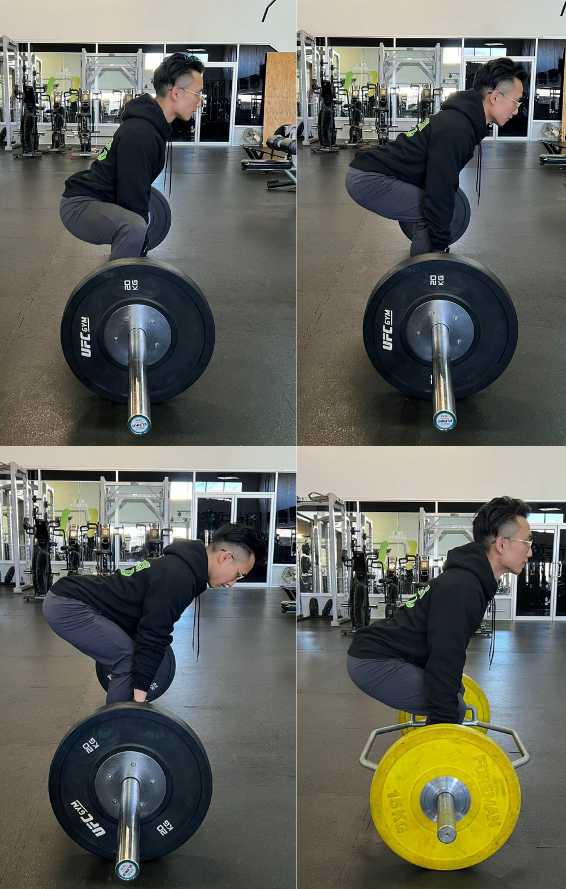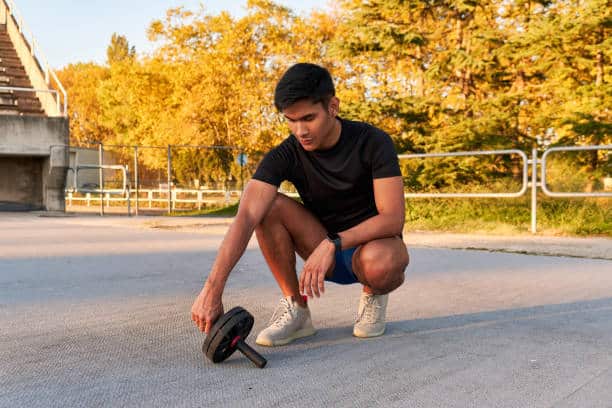It’s a common question: which is the better squat variation, the low bar or high bar? it depends!
We’re always looking for the best ways to achieve our goals, whether it’s gaining muscle, getting abs, or following the best diet. But to provide the right answer, we need context.
Differences between the low bar and high bar squat
The low bar squat is more suitable for taller individuals or those with longer femurs. Femur length can affect the center of mass and balance. The low bar squat utilizes a slight hinge position that leans the hips back, resulting in less hip flexion compared to the high bar squat.
In contrast, the high bar squat is more suitable for people with shorter femurs and/or greater hip flexibility. These individuals can squat straight down and maintain balance easily. For Olympic weightlifters, the high bar squat has greater carryover into their sport. The low bar squat may be better suited for larger individuals who have difficulty with hip flexion.
The low bar and high bar squat also differ in their bar position. The high bar squat has the barbell resting on the upper traps, while the low bar squat has the barbell resting below the upper traps, over the upper back and rear delts. This requires the lifter to maintain more upper body tension and can strain the shoulders if they lack external rotation. The low bar squat is more hip-dominant and loads more into the low back compared to the high bar squat, which slightly loads more into the quads.
The Benefits of High Bar Squats:
- Improved mobility: High bar squats require greater ankle and hip mobility compared to low bar squats, which can help improve overall mobility and flexibility.
- Increased vertical jump: The high bar squat recruits the quadriceps and glutes to a greater degree, which can lead to an increase in vertical jump performance.
- Better for front squats: The positioning of the bar in high bar squats is similar to that of front squats, making high bar squats an excellent exercise for improving front squat performance.
- Increased Quadriceps Activation: High bar squats are known to activate the quadriceps to a greater degree than low bar squats. This makes them an excellent exercise for those looking to develop their quads.
- Better for Olympic Weightlifters: High bar squats are a common exercise among Olympic weightlifters, as they mimic the positioning of the clean and jerk and snatch lifts.


Benefits of Low Bar Squats:
- Increased strength: low bar squats allow for greater loads to be lifted, which can help increase overall strength.
- Improved posterior chain development: Low bar squats target the glutes and hamstrings to a greater degree than high bar squats, which can help improve overall posterior chain development.
- Increased hip drive: Low bar squats require greater hip drive, which can translate to improved performance in other exercises that require hip drive, such as deadlifts and cleans.
- Can be better for powerlifters as it mimics the hip position of the deadlift
- Reduced stress on the knees: Low bar emphasize hip activation and require less forward knee travel, reducing stress on the knees. This makes low bar squats a better option for those with knee issues or for individuals who want to reduce knee stress during their workouts.


Which One Should You Choose?
The answer to this question depends on your training goals. If you’re looking to develop your quadriceps and improve your Olympic lifts, high bar squats may be the better choice. If you’re looking to target your glutes and hamstrings and improve your powerlifting lifts, low bar squats may be the better choice. However, it’s important to note that both exercises have their place in a well-rounded training program. Moreover, the best option might be the one that you can do well based on your anatomy while the other variation can be used for a change in stimulus and variety.
If you’re a trainer working with clients, it’s important to assess their goals, fitness level, and anatomy to choose the best version for your client. It’s also important to ensure that clients have proper form and technique before adding weight to the bar. For beginners, it may be helpful to start with the squat mechanics before adding too much load.
Give both variations a try and see how they feel for you! Remember to maintain proper form and consult with a qualified trainer if you have any questions or concerns.
Check out our article on another variation of the squat pattern: The Benefits of the Front Squat
Tags:
Related Posts
We’re here to help you!
Questions, comments or want to register? Fill out the form below and we will contact you shortly. Thanks!
"*" indicates required fields



